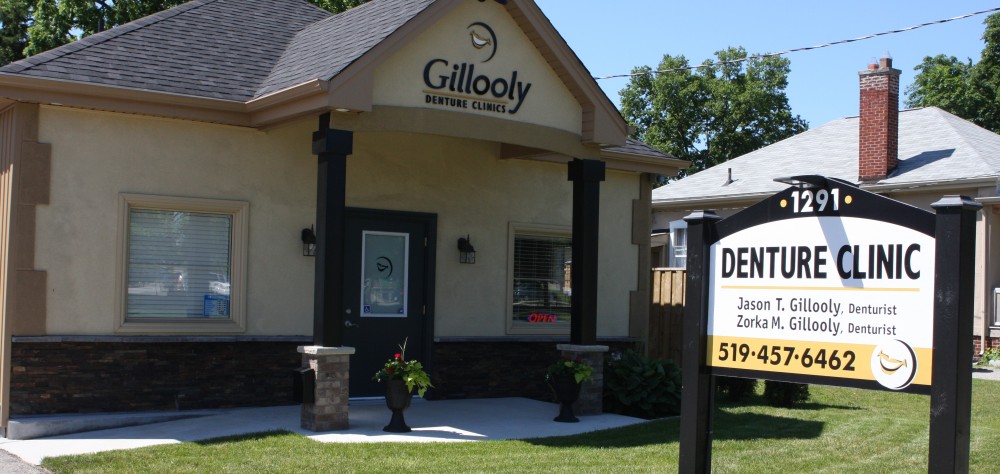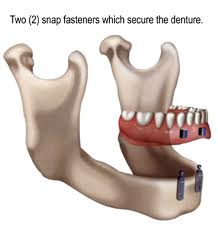
What Is It?
An implant-supported denture is a type of overdenture that is supported by and attached to implants. A regular denture rests on the gums, and is not supported by implants.
An implant-supported denture is used when a person doesn’t have any teeth in the jaw, but has enough bone in the jaw to support implants. An implant-supported denture has special attachments that snap onto attachments on the implants.
Implant-supported dentures usually are made for the lower jaw because regular dentures tend to be less stable there. Usually, a regular denture made to fit an upper jaw is quite stable on its own and doesn’t need the extra support offered by implants. However, you can receive an implant-supported denture in either the upper or lower jaw.
You should remove an implant-supported denture daily to clean the denture and gum area. Just as with regular dentures, you should not sleep with the implant-supported dentures at night. Some people prefer to have fixed (permanent) crown and bridgework in their mouths that can’t be removed. Your dentist will consider your particular needs and preferences when suggesting fixed or removable options.
How Does It Work?
There are two types of implant-supported dentures: bar-retained and ball-retained. In both cases, the denture will be made of an acrylic base that will look like gums.Porcelain or acrylic teeth that look like natural teeth are attached to the base. Both types of dentures need at least two implants for support.
- Bar-retained dentures — A thin metal bar that follows the curve of your jaw is attached to two to five implants that have been placed in your jawbone. Clips or other types of attachments are fitted to the bar, the denture or both. The denture fits over the bar and is securely clipped into place by the attachments.
- Ball-retained dentures (stud-attachment dentures) — Each implant in the jawbone holds a metal attachment that fits into another attachment on the denture. In most cases, the attachments on the implants are ball-shaped (“male” attachments), and they fit into sockets (“female” attachments) on the denture. In some cases, the denture holds the male attachments and the implants hold the female ones.
The Implant Process
The implants usually are placed in the jawbone at the front of your mouth because there tends to be more bone in the front of the jaw than in the back. This usually is true even if teeth have been missing for some time. Once you lose teeth, you begin to lose bone in the area. Also, the front jaw doesn’t have many nerves or other structures that could interfere with the placement of implants.
The time frame to complete the implant depends on many factors. The shortest time frame is about five months in the lower jaw and seven months in the upper jaw. This includes surgeries and the placement of the denture. However, the process can last a year or more, especially if you need bone grafting or other preliminary procedures.
Two surgeries usually are needed. The first one places the implants in the jawbone under your gums. The second surgery exposes the tops of the implants. The second procedure comes three to six months after the first.
A one-stage procedure is now used sometimes. In this procedure, your dentist can place the implants and the supporting bar in one step. The success rate of this procedure is high.
Initial consultation
Before any work is done, you will visit either a dental specialist called a prosthodontist or a general dentist who has advanced training in the placement and restoration of implants.
During the exam, the dentist will review your medical and dental histories, take X-rays and create impressions of your teeth and gums so that models can be made. In some cases, the dentist may order a computed tomography (CT) scan of your mouth. This shows where your sinuses (located above your upper teeth) and nerves are. It allows the dentist to make sure they will not be affected by the implant placement. A CT scan also may be done to see how much bone is available and to determine the best locations for the implants.
If you are not already wearing a complete denture to replace your missing teeth, your dentist will make you one. You will use this temporary denture until the implant-supported denture is placed. It will take about four visits, spanning several weeks, to complete this denture. By making this temporary denture, your dentist is able to determine the best position for the teeth in the final denture. The temporary denture also can be used as a backup if something happens to the final implant-supported denture. The temporary denture can also be used as the final denture to reduce overall costs. Attachments will need to be added so it can fit securely to the implants.
Once the temporary denture is finished, the surgeon will use a copy of it as a guide to help place the implants in the proper positions. Holes will be drilled in the copy of the denture so that the surgeon can see where the implants should be placed.





